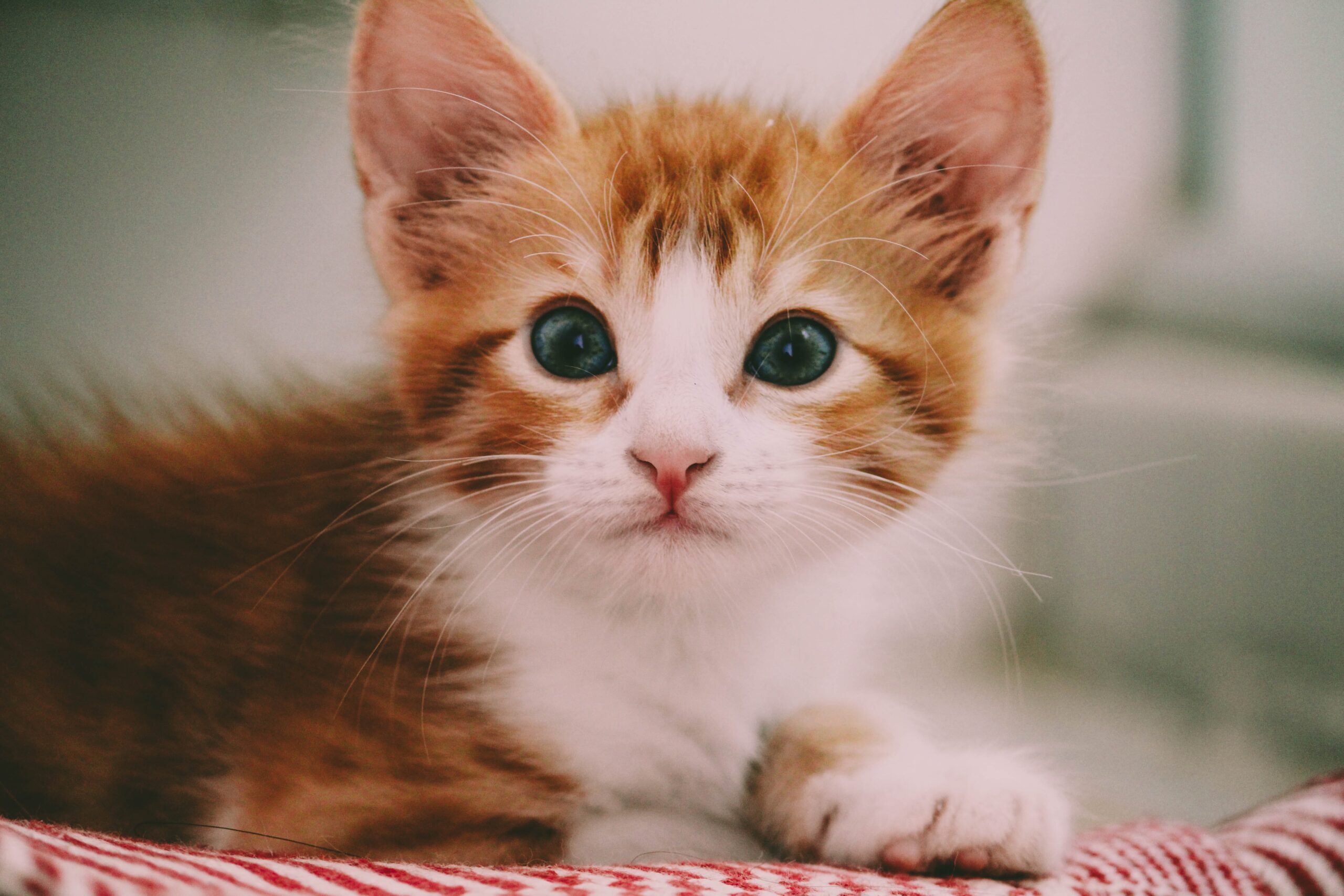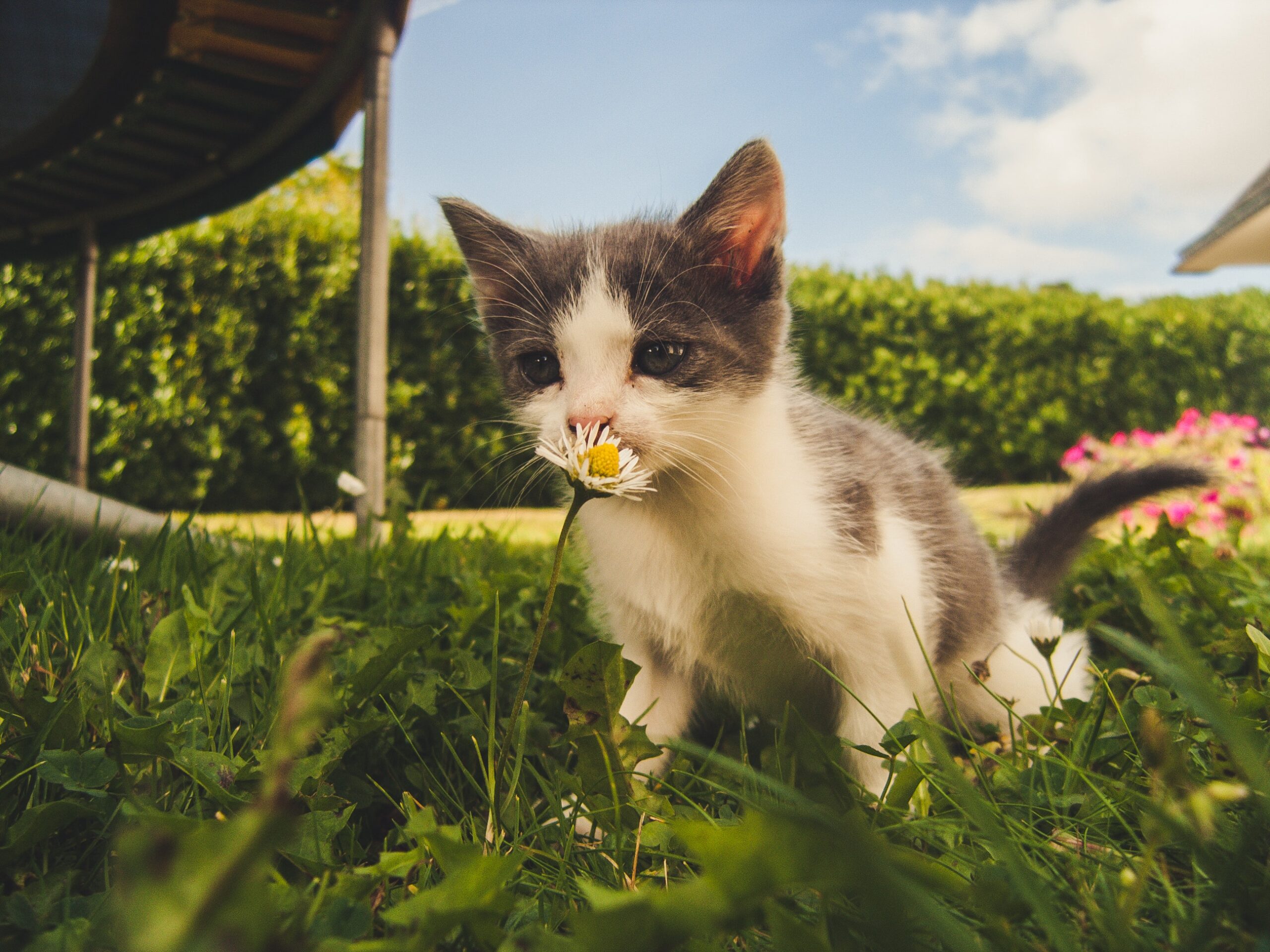Litter box training is a crucial aspect of responsible kitten ownership. Teaching a kitten to use the litter box not only ensures a clean and hygienic living environment but also promotes their physical and emotional well-being. Understanding the significance of litter box training sets the foundation for a harmonious relationship between kittens and their human companions.
Proper litter box training offers numerous benefits for both kittens and their owners. For kittens, it provides a designated and safe space for eliminating waste, which is essential for their natural instincts and development. It also reduces the risk of accidents and inappropriate elimination, preventing stress and frustration for the kitten.
For owners, a well-trained kitten using the litter box means less time spent cleaning up messes and more time enjoying the companionship of their furry friend. A successful litter box training experience fosters a positive and nurturing environment, leading to a happier and healthier relationship between the kitten and their human family.
This article will provide a comprehensive guide to litter box training for kittens, offering valuable insights and practical tips for successful training. It will cover the natural instincts of kittens, choosing the right litter box and location, positive reinforcement techniques, troubleshooting common challenges, and maintaining a clean and well-functioning litter box. Additionally, the article will address the transition from kitten to adult litter habits, training for multiple kittens, and conclude with a summary of key points to ensure a smooth and effective litter box training experience. By the end of this article, readers will have a thorough understanding of the importance of litter box training and the tools to create a positive and rewarding experience for both themselves and their beloved furry companions.
Understanding Kittens’ Natural Instincts
Why Do Kittens Instinctively Use Litter Boxes?
Kittens are born with natural instincts that drive them to use litter boxes for elimination. In the wild, mother cats teach their young to bury their waste to avoid attracting predators. Kittens learn this behavior from their mothers during their early weeks of life. This instinct to bury waste is retained even in domesticated kittens, making litter box training a relatively straightforward process.
Understanding the Importance of Maternal Influence in Training
The presence of the mother cat plays a vital role in the litter box training process. Mother cats stimulate their kittens to urinate and defecate by licking their genital and anal areas during the first few weeks of life. This not only helps keep the nest clean but also reinforces the association between the act of elimination and cleanliness.
Kittens raised without their mother or separated from her too early may require more patience and guidance during litter box training. In such cases, it is essential for the owner to take on the role of the mother cat by providing gentle stimulation and reinforcement.
What’s the Best Age to Begin Litter Box Training?
The best age to begin litter box training is around 3 to 4 weeks old when kittens start becoming more mobile and can learn basic behaviors from their mother. However, kittens should not be fully separated from their mother and littermates until they are at least 8 weeks old. During this time, they observe and imitate their mother’s litter box habits, making it easier for owners to reinforce those behaviors.
For kittens adopted or brought home at an older age, litter box training should begin as soon as possible. Kittens are capable of learning quickly, but patience and consistency are essential to ensure successful training.
Understanding kittens’ natural instincts is crucial for successful litter box training. Their innate tendency to bury waste, learned from their mother, makes them instinctively inclined to use litter boxes. By beginning training at the right age and providing appropriate guidance, owners can establish good litter box habits that will last a lifetime.
Choosing the Right Litter Box and Location
Types of Litter Boxes Suitable for Kittens
When selecting a litter box for your kitten, consider their size and specific needs. There are various types of litter boxes available, but for kittens, it’s best to start with a shallow and low-sided box. These are easier for young kittens to climb in and out of comfortably.
Open-top litter boxes are commonly recommended for kittens, as they offer easy access and are less intimidating. Hooded or covered litter boxes may make some kittens feel trapped or confined, potentially leading to litter box aversion or anxiety.
Litter Box Size and Accessibility
Choosing the appropriate size of the litter box is crucial for successful litter box training. Ensure that the box is large enough for your kitten to move around comfortably. A litter box that is too small may discourage the kitten from using it or cause accidents.
Additionally, the sides of the litter box should be low enough for easy entry and exit. Kittens may struggle with high-sided boxes, leading to litter spillage or accidents outside the box.
Selecting the Right Location for the Litter Box
The location of the litter box plays a significant role in encouraging your kitten to use it consistently. Place the litter box in a quiet and easily accessible area of your home. Avoid high-traffic areas or locations with loud noises, as these may scare or stress your kitten.
Keep the litter box away from their food and water bowls. Cats have a natural aversion to eliminating near their eating areas, so providing separate spaces for each activity promotes good litter box habits.
If you have a multi-level home, ensure there is at least one litter box on each level, especially during the initial training period. This accessibility ensures that your kitten always has a convenient and nearby option for eliminating waste.
Choosing the right litter box and location is fundamental to successful litter box training for kittens. Opt for a shallow, open-top box that is appropriately sized for your kitten’s comfort. Place the litter box in a quiet, accessible, and separate area from their eating space. By providing a suitable litter box and location, you set the stage for a positive and effective litter box training experience for your furry friend.
Introducing the Kitten to the Litter Box
Gradual Introduction to the Litter Box
Introducing your kitten to the litter box should be a gradual and positive experience. Start by placing the litter box in a confined and easily accessible area where your kitten spends most of their time. During the first few days, allow your kitten to explore the box without any expectations of using it for elimination. This helps them become familiar with the litter box and associate it with a safe and comfortable space.
Encouraging the Kitten to Investigate the Litter Box
To encourage your kitten to investigate the litter box, place some of their bedding or a few familiar toys inside. Familiar scents can help create a sense of security and encourage them to explore. You can also gently place the kitten in the litter box after meals or naps to give them the opportunity to associate it with elimination.
Avoid forcing your kitten into the litter box or scolding them if they do not immediately use it. Patience and positive reinforcement are key during this process. Instead, praise and reward your kitten with treats or gentle pets when they show interest in the litter box or step inside.
Recognizing Signs of Readiness for Litter Box Use
Watch for signs that your kitten is ready to use the litter box for elimination. Common signs include sniffing the litter, scratching at the litter, or crouching as if preparing to go. If you notice any of these behaviors, gently place your kitten in the litter box to reinforce the association.
It is essential to monitor your kitten closely during this training period and take note of their usual elimination habits. Kittens typically need to use the litter box after meals, naps, or play sessions. Being observant and proactive in guiding them to the litter box during these times can prevent accidents and establish good litter box habits.
Introducing your kitten to the litter box requires patience and positive reinforcement. Gradually acclimate them to the litter box, encourage exploration, and offer praise when they show interest in it. Recognizing signs of readiness for litter box use and guiding them appropriately will help your kitten establish good litter box habits and set the stage for successful litter box training.
Positive Reinforcement Techniques
Use Rewards and Praise for Successful Litter Box Usage
Positive reinforcement is a powerful tool for encouraging desired behaviors in kittens. When your kitten successfully uses the litter box, immediately offer verbal praise, gentle pets, or a favorite treat. Associating positive experiences with litter box usage reinforces the behavior and encourages your kitten to repeat it.
Offering rewards consistently for each successful trip to the litter box helps your kitten understand that this is a behavior you value and appreciate. Make the reinforcement immediate and enthusiastic to create a positive connection between the litter box and the reward.
Avoid Punishment for Accidents
Punishment is not an effective or humane way to address accidents or inappropriate elimination. Yelling, scolding, or physical punishment can frighten and stress your kitten, making them associate the litter box with negative experiences. This can lead to litter box aversion or anxiety, hindering the training process.
Instead of punishment, focus on prevention and redirection. If you catch your kitten in the act of eliminating outside the litter box, gently pick them up and place them inside. Never force them into the litter box aggressively. Then, clean the soiled area thoroughly to remove any lingering scent that might attract them back to that spot.
Consistency in Reinforcement to Establish Good Habits
Consistency is key in litter box training. Establish a regular routine for your kitten, including scheduled feeding times and play sessions. Encourage them to use the litter box after meals and naps, as kittens often have a predictable elimination schedule.
Place the litter box in the same location and avoid moving it frequently. Consistency in location and routine helps your kitten associate the litter box with the act of elimination and reinforces good habits.
If your kitten has an accident, resist the urge to scold or punish them. Instead, remain patient and continue with positive reinforcement when they use the litter box appropriately. Consistency in your response to their behavior is essential for them to learn and form good litter box habits.
Positive reinforcement techniques are highly effective in litter box training for kittens. Use rewards, praise, and gentle encouragement when your kitten uses the litter box successfully. Avoid punishment and focus on prevention and redirection if accidents occur. Consistency in your approach and reinforcement will help establish good litter box habits and foster a positive and trusting relationship with your furry friend.
Troubleshooting Common Challenges
Litter Box Aversion or Fear in Kittens
Litter box aversion or fear can be a common challenge during litter box training. Some kittens may be hesitant to use the litter box due to past negative experiences, discomfort with the litter type, or anxiety related to the box’s location. It’s essential to address these issues promptly to ensure successful litter box training.
To address litter box aversion or fear, try the following:
- Experiment with different litter types: Some kittens may have preferences for certain litter textures. Try offering a variety of litter types, such as clumping, non-clumping, or natural alternatives like paper-based or pine litter, to find one that your kitten prefers.
- Assess the litter box location: Ensure that the litter box is in a quiet and accessible area. Avoid placing it in high-traffic or noisy spots that may scare your kitten away from using it.
- Keep the litter box clean: Kittens are sensitive to cleanliness, so make sure to clean the litter box regularly. Scoop waste daily and change the litter completely at least once a week.
- Gradual exposure: If your kitten seems fearful of the litter box, try a gradual introduction. Place the litter box in a space where your kitten spends time and allow them to explore it at their own pace. Offer praise and treats when they approach the box to create positive associations.
Solutions for Litter Box Avoidance or Inappropriate Elimination
In some cases, kittens may avoid using the litter box altogether or develop inappropriate elimination habits. If you encounter litter box avoidance or accidents, consider the following solutions:
- Assess the litter box cleanliness: Make sure the litter box is consistently clean and odor-free. Kittens may avoid a dirty litter box and look for alternative places to eliminate.
- Remove the scent of accidents: Thoroughly clean any areas where your kitten has had accidents. Use enzymatic cleaners specifically designed to break down pet odors to remove any lingering scents that may attract them back to those spots.
- Limit access to problem areas: If your kitten consistently eliminates in specific areas, temporarily block access to those spaces until they have established good litter box habits.
- Offer multiple litter boxes: If you have a multi-level home or multiple kittens, consider providing one litter box per floor or per kitten to ensure easy access and reduce competition for litter box usage.
Understanding When to Seek Veterinary Advice
If your kitten continues to exhibit litter box aversion, inappropriate elimination, or any concerning changes in litter box habits despite your efforts, it’s crucial to seek veterinary advice. In some cases, litter box issues may be related to underlying health problems or stressors that require professional evaluation.
Medical conditions like urinary tract infections, digestive issues, or other health concerns can lead to litter box avoidance or changes in elimination habits. Your veterinarian can conduct a thorough examination and provide guidance on potential medical issues and behavioral solutions.
Troubleshooting common challenges in litter box training requires patience and a systematic approach. Addressing litter box aversion or fear, providing solutions for litter box avoidance or inappropriate elimination, and knowing when to seek veterinary advice are essential steps in ensuring a successful litter box training experience for your beloved kitten. With dedication and understanding, you can overcome challenges and create a positive litter box environment for your furry friend.
Cleaning and Maintaining the Litter Box
Importance of Cleanliness for Successful Litter Box Training
Maintaining a clean litter box is crucial for successful litter box training. Kittens, like adult cats, are naturally clean animals and prefer using a pristine litter box. A dirty or smelly litter box can deter a kitten from using it, leading to accidents or inappropriate elimination.
A clean litter box also helps to prevent litter box aversion and ensures that your kitten feels comfortable and safe during elimination. Regular cleaning fosters a positive association with the litter box, reinforcing good litter box habits and promoting successful litter box training.
How Often Should I Clean the Litter Box?
Scooping the litter box daily is essential to remove soiled litter and waste promptly. Kittens tend to eliminate more frequently than adult cats, making daily scooping a necessity. Remove clumps and solid waste with a scoop, and dispose of them in a designated trash bag or receptacle.
In addition to daily scooping, it’s important to change the litter and clean the litter box regularly. The frequency of complete litter changes depends on the type of litter used and the number of kittens using the box. Generally, changing the litter entirely once a week is recommended for a single kitten. If you have multiple kittens using the same box, more frequent changes may be necessary.
When changing the litter, thoroughly wash and disinfect the litter box with mild soap and water. Avoid using strong-scented cleaning products, as the residual odor may deter your kitten from using the box.
Choosing the Right Litter and Dealing with Litter Tracking
Choosing the right litter is essential for litter box training success. Kittens may have preferences for certain litter textures, so it’s worth experimenting with different types to find the one your kitten prefers. Unscented, clumping, and dust-free litters are generally safe choices for most kittens.
To reduce litter tracking, place a litter mat under and around the litter box. The mat will catch any loose litter stuck to your kitten’s paws, minimizing the mess outside the box.
Keep in mind that kittens can be curious and may play with or scatter litter while exploring the box. This is a normal part of their development and should improve as they become more accustomed to using the litter box.
Maintaining a clean litter box is essential for successful litter box training. Daily scooping, regular litter changes, and proper cleaning contribute to a positive litter box environment that encourages good habits in your kitten. Choose the right litter type based on your kitten’s preferences and minimize litter tracking with the use of litter mats. By providing a clean and well-maintained litter box, you create an inviting space for your kitten to eliminate comfortably and promote successful litter box training.
Transitioning from Kitten to Adult Litter Habits
Monitoring Progress and Adjusting Litter Box Routines
As your kitten grows into adulthood, their litter box habits may change. It is essential to monitor their progress and make adjustments to their litter box routines as needed. Keep track of their elimination patterns and ensure they continue to use the litter box consistently.
If you have multiple kittens, observe their interactions with the litter box to ensure that there are no conflicts or territory issues. Provide multiple litter boxes if necessary to prevent competition and make it easier for each cat to find a clean and accessible spot.
Gradual Changes in Litter Type or Location for Adult Cats
When your kitten reaches adulthood, you may consider transitioning them to a different litter type or location if needed. Some adult cats may develop preferences for specific litter textures or may prefer open-top or hooded litter boxes.
If you plan to change the litter type, do so gradually by mixing the new litter with the old one over several days. This allows your cat to become accustomed to the new texture and scent. Avoid abrupt changes, as it may lead to litter box aversion or rejection of the new litter.
Similarly, if you need to relocate the litter box, move it gradually to the new spot. Start by placing the litter box closer to the desired location and gradually move it a few inches each day until it reaches the new spot. This gradual transition helps your cat adapt to the change without causing confusion or stress.
Preparing for Potential Regressions and Addressing Them Effectively
Occasionally, adult cats may experience litter box regressions due to various factors, such as changes in the household, health issues, or stress. It’s essential to be prepared for such situations and address them effectively to prevent long-term litter box problems.
If your adult cat starts having accidents or avoiding the litter box, first rule out any potential medical issues by consulting with your veterinarian. Medical problems like urinary tract infections or gastrointestinal issues can cause changes in litter box habits and require prompt attention.
Once medical issues are ruled out, consider potential stressors in your cat’s environment. Changes in routine, new pets, or household dynamics can trigger litter box problems. Try to identify and eliminate sources of stress to help your cat return to using the litter box consistently.
Reinforce positive litter box habits by offering praise and rewards for appropriate litter box usage. Ensure the litter box is clean and accessible at all times. Addressing any litter box issues promptly and with patience will increase the likelihood of a successful transition to adult litter habits.
Transitioning from kitten to adult litter habits requires close monitoring and flexibility in your approach. Be attentive to your cat’s needs and make adjustments to their litter box routine as they grow. Gradual changes in litter type or location can be beneficial, and preparation for potential regressions will help you address any issues effectively. By providing a supportive and positive environment, you can maintain good litter box habits in your adult cat and continue to enjoy a clean and harmonious living space.
Litter Box Training for Multiple Kittens
Unique Challenges and Considerations when Training Multiple Kittens
Training multiple kittens to use the litter box can present unique challenges. Each kitten has its own personality, preferences, and litter box habits, making it important to cater to their individual needs while promoting good litter box practices for all.
Competition for resources, such as litter boxes, can arise among multiple kittens. Additionally, one kitten’s inappropriate elimination may influence the behavior of the others, leading to a potential litter box aversion for the entire group.
Tips for Ensuring Each Kitten Feels Comfortable Using the Litter Box
To ensure each kitten feels comfortable using the litter box, consider the following tips:
- Provide multiple litter boxes: The general rule of thumb is to have one litter box per kitten plus an extra one. This ensures there are enough options available, reducing competition and stress.
- Spread out the litter boxes: Place the litter boxes in different locations to allow each kitten easy access without feeling crowded. This promotes a sense of privacy and security during elimination.
- Supervise the litter box area: During the initial training period, observe the kittens while using the litter boxes. If you notice one kitten dominating or preventing access to the boxes, gently redirect them to encourage a fair distribution of resources.
- Use identical litter boxes: Providing identical litter boxes with the same litter type can help prevent preference disputes. Kittens are more likely to share litter boxes that look and feel the same.
How to Avoid Litter Box Territory Disputes Among Kittens
Litter box territory disputes can occur if one kitten perceives a litter box as their exclusive territory, leading to territorial behavior or avoidance by other kittens. To avoid such disputes:
- Keep litter boxes clean: A clean litter box is less likely to be perceived as a marked territory. Regularly scoop waste and change the litter to ensure a fresh and inviting environment for all kittens.
- Monitor behavior: Observe the kittens’ interactions around the litter boxes. If you notice any signs of tension or territorial behavior, intervene to prevent escalating conflicts.
- Create separate feeding and litter areas: Providing separate spaces for eating and eliminating can help reduce territorial behaviors near the litter boxes.
- Consider additional resources: Offer multiple resources, such as food dishes, water bowls, and resting spots, to prevent competition and reduce territorial disputes.
By implementing these strategies, you can create a harmonious environment where each kitten feels comfortable using the litter box without feeling threatened by others.
Litter box training for multiple kittens requires thoughtful planning and consideration of their individual needs. Providing multiple litter boxes, spreading them out in different locations, and ensuring a clean and inviting environment are key to promoting good litter box habits. By addressing territorial behaviors and offering ample resources, you can minimize disputes and create a positive litter box experience for all your furry companions.
Conclusion
Litter box training is a crucial aspect of responsible kitten ownership. To ensure successful litter box training for your furry friend, remember the following key points:
- Start early: Begin litter box training when your kitten is around 3 to 4 weeks old, and gradually introduce them to the litter box.
- Choose the right litter box: Opt for a shallow, open-top box with low sides that are easily accessible for your kitten.
- Select the right location: Place the litter box in a quiet and easily accessible area, away from their eating and sleeping areas.
- Use positive reinforcement: Praise, rewards, and gentle encouragement will reinforce good litter box habits.
- Avoid punishment: Never scold or punish your kitten for accidents, as it can lead to litter box aversion.
- Maintain cleanliness: Regularly scoop the litter box and change the litter to provide a clean and inviting space.
- Monitor progress: Keep track of your kitten’s litter box habits and adjust routines if needed as they grow.
Litter box training is a process that requires patience, consistency, and positive reinforcement. Be understanding of your kitten’s individual needs and provide encouragement throughout the training period. Avoid punishment and focus on praising and rewarding their good behavior. With time and persistence, your kitten will learn to use the litter box reliably.
The joy and convenience of having a well-trained litter box-using kitten cannot be understated. A properly trained kitten will reliably use the litter box, resulting in a clean and odor-free living space. A litter-trained kitten is not only more pleasant to have around the house but also builds a stronger bond with its owner through positive experiences during training.
Having a litter-trained kitten also means fewer worries about accidents and inappropriate elimination. You can focus on enjoying quality time with your furry friend and provide the love and care they deserve.
Successful litter box training for kittens requires understanding their natural instincts, providing appropriate litter boxes, using positive reinforcement, and maintaining cleanliness. Be patient and consistent in your training approach, and your efforts will be rewarded with the joy and convenience of having a well-trained litter box-using kitten as your beloved companion.










